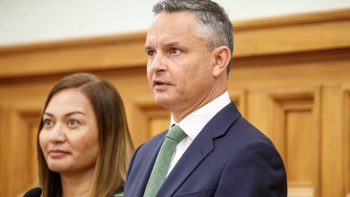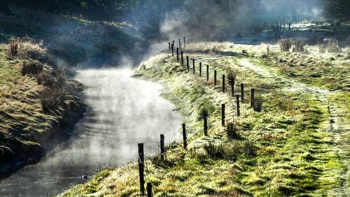
National wants to scrap lower speed limits on highways if elected, but there’s a big “if” in its promise.
The party recently vowed to make a sharp U-turn on 80km/h highway speed limits, returning them to 100km/h. However, the party said it would only increase speeds “if it’s safe to do so”.
Defending the move, National’s transport spokesperson Simeon Brown has claimed that the road toll actually increased as speed limits dropped.
So is he right or do the lower speeds save lives? And who sets the speed rules anyway? Local Democracy Reporting explains.
Why have speed limits been dropping?
Speed limits have been dropping under the Road to Zero campaign, which aims to cut deaths and serious injuries. Speed limits on highways have dropped to 80km/h or 90km/h. Roads around schools have been lowered to 30km/h.
An estimated 4 per cent of highways are now lowered to 80km/h, according to Waka Kotahi NZ Transport Agency.
What’s been the reaction?
The majority of New Zealanders think the 100km/h speed limit on the open road should be left as it is, according to a Waka Kotahi survey in December 2022.
One in five think the speed limit should be raised and 8 per cent think it should be lowered.
On a local level, there has been a big backlash as people complained that speed limits were being lowered despite community opposition.
Wairarapa commuters were outraged when a major stretch of State Highway 2 was cut to 80km/h in January. The majority of about 1300 submissions were against it.
This state highway connects the Wairarapa to Wellington and the central and eastern North Island.
It’s the first highway stretch National will look at reversing back to 100km/h if elected, but Labour’s local candidate Kieran McAnulty also wants it returned to 100km/h.
/cloudfront-ap-southeast-2.images.arcpublishing.com/nzme/QJLPREVGQAZOI3OREESNLESTWM.jpg)
An estimated 4 per cent of highways are now lowered to 80km/h, according to Waka Kotahi. Photo / John Borren
Who has the power to change speed limits?
Road speed limits can’t just change overnight. There is a process and legislation to follow.
Under the current rules, speed limits are set by Road Controlling Authorities (councils and Waka Kotahi) through a set process that includes community and iwi consultation.
Waka Kotahi is the Road Controlling Authority for state highways, while local authorities look after local roads.
This means Waka Kotahi can set the highway speed to 80km/h, but a local council can decide to keep neighbouring roads at 100km/h - which has recently happened in Wairarapa.
But central Government also has a say. In 2022, the Government introduced new rules requiring councils to implement speed plans that align with its Road to Zero strategy, which includes lower speed limits.
National says it will scrap the rules set in 2022 and replace them with a new set of guidelines.
“[This] will require road controlling authorities to set speed limits taking into account not only safety impacts, but also travel time impacts, and the views of road users and the community,” Brown, National’s transport spokesperson, said.
/cloudfront-ap-southeast-2.images.arcpublishing.com/nzme/LA5KIJ7T43DIP64Z6Q5XDTNMAI.jpg)
Under the current rules, speed limits are set by Road Controlling Authorities (councils and Waka Kotahi). Photo / Jason Oxenham
What’s the cost?
National says it will put an initial $30 million towards reversing speed limit reductions on state highways and around neighbourhood streets over three years. Funding will be made available to local councils and Waka Kotahi to cover the cost of lifting speed limits.
Is it true the road toll increased as speed limits dropped?
Technically, yes. The road toll increased from 350 in 2019, when ‘Road to Zero’ was introduced, to 374 last year. But that’s a blunt way to look at it.
The road toll hovered between 318 and 350 in the years in between, but Covid lockdowns meant there were fewer cars on our roads at times.
A more accurate picture looks at where speeds have changed.
State highway 5, between Rangitāiki and Esk Valley, dropped from 100km/h to 80km/h in 2022. Waka Kotahi commissioned an independent review of this change. Researchers anaylsed crash data, average speeds and traffic volumes before and after the speed limit change to determine the effects on safety and travel time.
/cloudfront-ap-southeast-2.images.arcpublishing.com/nzme/3RLL4JP56RD7DIORER22QM36ZM.jpg)
Speed limits have been dropping under the Road to Zero campaign, which aims to cut deaths and serious injuries. Photo / 123rf
The travel time increased by up to 3.6 minutes for this 76km stretch of motorway, resulting in a travel time cost of $1.3m for the year.
About 34 crashes were avoided in the year, and the severity of other crashes was reduced, the review found.
The safety benefits - the cost of injuries and deaths on our roads - was valued at around $93m for the year (to give some context, a fatality is considered a $12.5m cost).
Similarly, deaths and serious injuries on SH6 between Blenheim and Nelson reduced by approximately 80 per cent in the two years after speed limits were lowered in December 2020.
So why increase speeds back to 100km/h?
National says improving road safety and speeding up traffic flow isn’t just about getting people where they want to go faster; it’s also about boosting productivity and economic activity.
What does Labour think?
Labour leader Chris Hipkins recently signalled the Government had already asked Waka Kotahi to reduce the scale of its proposed changes to speed limits. Labour wants to focus on the most high-risk roads.
David Parker, Labour’s transport spokesperson, confirmed speed reductions shouldn’t be widespread, but also criticised National’s move.
“Labour’s balanced approach to speed reductions saves lives while minimising inconvenience to drivers – in stark contrast to National’s reckless and irresponsible policy.”
Will National still consider ‘safety’?
National put a large disclaimer in its policy announcement. It will reinstate 100km/h speed limits “where it is safe to do so”.
So, what is deemed “safe”? We asked National.
“When evaluating a speed limit, if the economic benefits and the views of road users outweigh the safety impacts, these roads would be considered safe to increase speed limits,” Brown said.
National would also invest in road infrastructure. Brown said they would also focus on the “number one contributing factor in fatal crashes” by increasing alcohol breath testing and introducing legislation to roll out roadside drug testing.
What now?
We wait for the election. If National is elected, more details are likely to be released on what will be done – and what they deem as ‘safe’. And if road speeds are increased, it goes back to community consultation.
Or, if location services are enabled, click on the icon to go to your current location - this can take a moment.
You can vote at any voting place. But voting will be faster at your electorates voting places.
A voting place marked with a icon supports easy voting for neighbouring electorates. Click on a voting place icon for details.
The map shows both general and Māori electorate boundaries.
Take your Radio, Podcasts and Music with you









